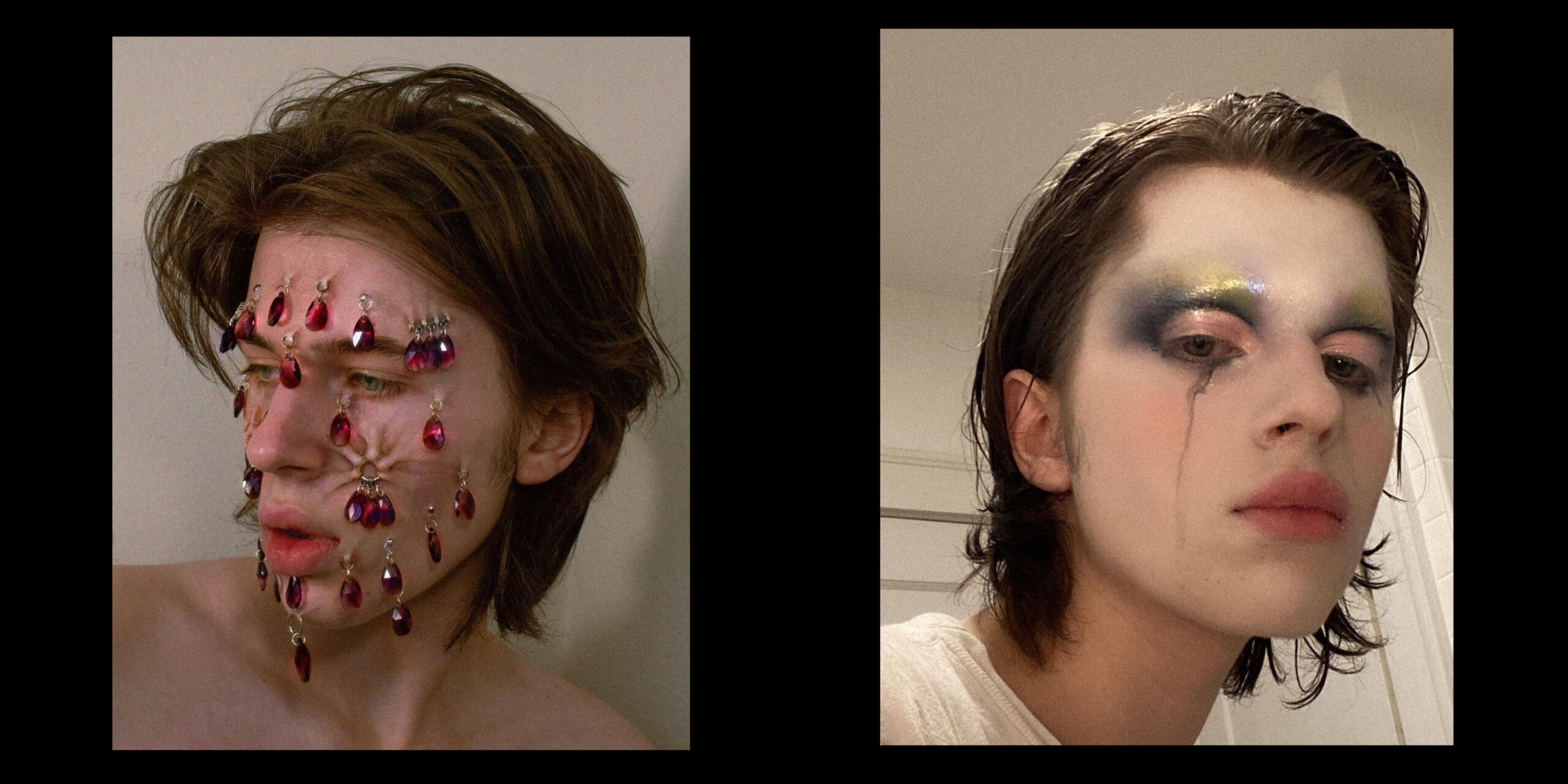Is the Ugly Beauty movement a liberation from beauty standards or just another fad?
Looking tired and disheveled? Just finished crying? Or were you aiming for luscious lashes and ended up with a clumpy, spidery mess? Don’t bother fixing it; you’ve just achieved the latest beauty look. Deemed “ugly beauty,” several unconventional trends – ranging from looking slightly unkempt to emulating avant-garde club-kid makeup – have been dominating the media (social and traditional) for a while now.
Last year, accentuating dark under-eye circles was a Tik Tok trend achieved via makeup or filters. Barragán’s S/S23 show took anti-beauty to the extreme with prosthetic overfilled lips and “meth teeth” while fake facial piercings and smudged makeup popped up elsewhere. The most all-consuming of these trends is undoubtedly bleached brows, sometimes used as a shortcut to looking fashion-forward. Tagwalk reported a 98.14% rise in bleached brows on the runway from S/S22 to S/S23. Before it was a trend, Instagram pages like Makeup Brutalism and Terry Barber On Beauty were proponents of purposefully jarring makeup.
The fashion journeys of celebrities like Julia Fox and Doja Cat also demonstrate a descent into the strange. When Fox shot to pop culture notoriety at the beginning of the year, she made harsh, imperfect, black eye makeup her signature. More recently, she’s been preaching that “ugly” is in, as well as aging and wearing clothes that purposely don’t flatter the body. Doja Cat, for her part, has been experimenting with avant-garde looks for a while, shaving her head and eyebrows. During the latest fashion month, she made headlines with her makeup looks — donning clown-white, bruised, and a fully-gold face.
This rebellious sentiment is accompanied by intentional messiness on the fashion scene. S/S23 featured wrinkled fabrics and scratched leather. Fox’s comment about not dressing to flatter your body was foreshadowed by designers like Michaela Stark and Karoline Vitto, who used clothes to accentuate areas of the body you may be uncomfortable with. (In a strange contradiction, the disheveled ‘heroin chic’ aesthetic is rearing its head too, with think pieces evaluating the return of “skinny” and the party lifestyle being propagated on Instagram pages like @indiesleaze.)
But why? Is it a rejection of the male gaze? “Man repellent,” as Fox called her bleached eyebrows, reveling in the fact that they make her son’s father uncomfortable. Or, does this quest for the unconventional come from a feeling of fatigue towards perfect beauty due to its over-saturation in the media? NYC-based makeup artist Julian Stoller believes that with the beauty industry’s popularity online “we now see how many people partake in the same [beauty] rituals that we once considered expressions of our individualism. I think this sent a lot of people in search of more niche communities [and subcultures] to identify with.”
The “clean girl” beauty style relies on being already conventionally attractive, focussing on skincare and minimal makeup to look effortlessly put together. Maybe ugly beauty is a reaction to this, removing the pressure to have it all together, to wake up at 6 am to work out and make a green smoothie? Embracing looking more like you’ve slept in your makeup than done a 10-step skincare routine?
However, just like faces synonymous with the clean girl aesthetic (think Hailey Bieber), many famous supporters of ugly beauty like Doja Cat, Julia Fox, FKA Twigs, and Jazzelle Zanaughtti (@uglyworldwide) are conventionally attractive. If you have to be pretty to make ugly beauty chic, what makes it different from all other beauty trends, if not even less accessible? Stoller asserts, “I think a lot of people have tried to rationalize this trend as some sort of monumental condemnation of beauty as a concept, but I believe its prominence can mainly be accredited to an ever-accelerating [online] trend cycle.”
The choice to be ugly in an artistic way and the politics of who can get away with it are also rooted in a culture that traditionally values light skin and thin bodies. Although the trend is arguably a rejection of the male gaze, we’re still striving for some form of beauty. “People can call it “anti-beauty”, but I think we all want to still feel beautiful,” adds Stoller. “There are just enough people that are gravitating towards this look right now, that we are re-evaluating what beauty looks like currently.”
Ultimately, the ugly beauty trend is just that: a trend. Individual choices can be liberating, but we can’t expect a beauty revolution from the same industry that subjects women’s body types to fads. It’s refreshing to see a shift that supports self-expression over perfection, but it’s still within the context of traditional beauty standards. And, despite the far-reaching facade of social media, it’s a relatively insular phenomenon since the craziest looks will likely keep to fashion circles. Though hopefully, the irreverence and exploration the trend promotes will rub off on those outside fashion’s inner sanctums.
Images courtesy of Julian Stoller.





